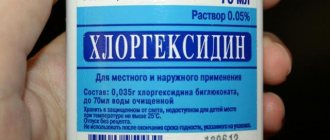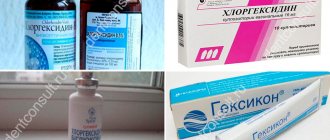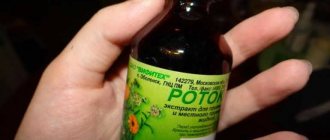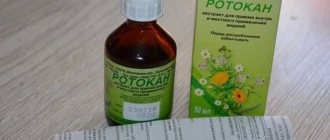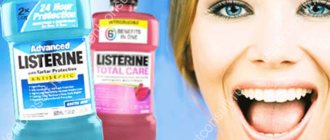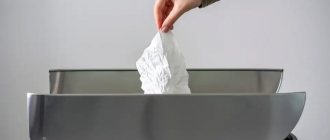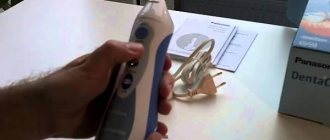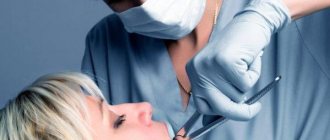What is Chlorhexidine used for?
An aqueous solution is prescribed to be taken in the following cases:
- cervical erosion;
- for the prevention of syphilis, genital herpes and other vaginal diseases;
- disinfection of dentures, disinfection of wounds;
- various diseases of the oral cavity.
An alcohol solution is used to treat hands and medical devices before surgery. The solution is also used to treat the working surface of medical equipment.
Vaginal suppositories are effective for the following conditions:
- in order to prevent infections that can be transmitted as a result of unprotected sexual intercourse;
- bacterial vaginosis;
- prevention of inflammation and infections before surgery, childbirth or abortion.
What is more effective against coronavirus – chlorhexidine, miramistin or hydrogen peroxide
Chlorhexidine and Miramistin are antiseptics that many consider to be analogues. In fact, these drugs differ in the active substance: for Chlorhexidine it is chlorhexidine bigluconate (a salt of gluconic acid), and for Miramistin it is benzyldimethyl [3-(myristoylamino)propyl] ammonium chloride monohydrate.
As a result of experiments to determine the MIC (minimum inhibitory concentrations) of various antiseptics against test cultures of human coronaviruses in vitro, it was found that Miramistin is 5 times more effective than chlorhexidine (Table 1).
But it is not advisable to use Miramistin instead of chlorhexidine - it is 20 - 30 times more expensive. In addition, it is not intended for use on hands.
Hydrogen peroxide is an antiseptic for external use, known for its powerful oxidizing properties. It destroys the lipid membranes of cells, so it is suitable for fighting coronavirus.
Hydrogen peroxide is a cheap and effective antiseptic against the COVID-19 virus. Unlike chlorhexidine, it has a short-term effect rather than a prolonged one (up to 4 hours). It is very aggressive towards the skin, so it can only be used to disinfect objects with surfaces made of non-porous materials.
A three percent solution of hydrogen peroxide can be used to disinfect surfaces and prepare skin disinfectants with your own hands.
How to use Chlorhexidine in gynecology
The product is actively used to prevent sexually transmitted diseases. No later than 2 hours after unprotected intercourse, you need to take the solution. Men will need to insert 2 ml into the urinary canal, and women will need to insert 2 ml into the urinary canal and another 5-7 ml into the vagina. It is recommended to wipe the skin around the genitals with the solution. The instructions say that after using the drug you need to wait 2 hours before urinating. Otherwise, the effect of use will be less.
For preventive purposes, vaginal suppositories can be used.
Before using the product for thrush and other gynecological pathologies, you should consult a specialist in advance.
Application of 0.05% solution
The instructions for using Chlorhexidine for rinsing are quite simple:
- Pour the required volume of solution from the bottle into a special glass or other convenient container.
- Sip a small amount and keep it in your mouth.
- Tilt your head back and begin the procedure, not allowing the liquid to go down the esophagus.
- Tilt your head, throw it back deeper, return to the starting position. This is done so that the drug covers all the walls of the oropharynx.
- To achieve the effect, it is enough to rinse with one such portion of the solution for thirty seconds.
- Spit out the product - do not swallow it.
The recommended number of rinses (half a minute each) is about three times a day.
Contraindications and adverse reactions
Taking the drug is contraindicated in the following cases:
- increased susceptibility to the components included in the composition;
- patients with dermatitis;
- simultaneous use with other antiseptics, for example, hydrogen peroxide;
- in ophthalmology for washing the eyes.
It is better to refrain from using the product to disinfect the surgical field before or after surgery on the central nervous system and auditory canal.
In pediatrics, the drug is used with great caution.
Some patients may experience undesirable reactions such as:
- dry skin;
- allergic skin rashes;
- itching of the skin;
- light sensitivity.
With prolonged use of the product in dentistry, changes in taste may occur, tartar may appear, or teeth may become stained.
Infections caused by antibiotic-resistant microflora represent an ever-growing threat in both hospital and community settings. Nosocomial infections lead to a decrease in the effectiveness of therapy, an increase in the duration of hospitalization and an increase in mortality.
Chlorhexidine bigluconate was developed in Great Britain in 1950. It is the first internationally recognized antiseptic for skin and wounds. One of the advantages of chlorhexidine, in addition to its pronounced antimicrobial effect, is its ability to bind to various biological substrates while maintaining its antibacterial activity, and then be slowly released, which leads to the preservation of effective concentrations of the drug. To date, there are no reports of resistance to chlorhexidine, despite more than 60 years of active use of the drug in the clinic. Chlorhexidine gluconate remains important in the prevention of nosocomial infections.
Widespread use of antiseptic methods for the prevention and treatment of infections followed the publication of Joseph Lister's The Antiseptic Principle in Surgical Practice in 1867. At the same time, “Lister’s antiseptics” met ardent opponents, whose main argument was the toxicity of the antiseptic they used (carbolic acid). Despite the availability of numerous antiseptics, the question of the safety and effectiveness of this group of drugs remains constantly relevant. The “longevity” of chlorhexidine and the prospects for its further use as one of the most powerful antiseptics widely used in clinical practice is a pressing issue for clinicians.
A cationic detergent (detergent), later named chlorhexidine, was synthesized during the development of antimalarial drugs in 1947. This compound has bactericidal antimicrobial activity, especially against gram-positive microorganisms. Of the 10,040 compounds, the first to enter the market was chlorhexidine gluconate, registered in 1954 by Imperial Chemical Industries Co.LTD (UK) as “Gibitan” - the first internationally recognized antiseptic for the treatment of wound surfaces and skin. In 1957, only 3 years after entering the market, the indications for its use were expanded to include not only skin treatment, but also use in ophthalmology, urology, gynecology and otorhinolaryngology. In 1959, chlorhexidine began to be used to control bacterial plaque, leading to its widespread use in dentistry. Currently, in clinical practice, chlorhexidine is preferred not only when treating the skin (hands, surgical field), but also as an oral antiseptic, including for the prevention of nosocomial infection. The most commonly used concentrations are 0.2% and 0.12% solutions. In addition to its effect on plaque and gum condition (gingivitis), chlorhexidine is effective in the prevention and treatment of caries, secondary infections after dental procedures or implant placement. Chlorhexidine reduces the bacterial load and the risk of bacteremia after dental procedures. It is also used in the treatment of recurrent atrophic stomatitis and stomatitis associated with the installation of dentures, primarily in groups of patients with orthodontic appliances and immune disorders. One of the main advantages of chlorhexidine, in addition to its powerful antimicrobial effect, is its ability to retain its antimicrobial activity when bound to various substrates. At the same time, it is released slowly while maintaining an effective concentration. This property is known as substantiveness. Chlorhexidine is not susceptible to blood, pus, or saliva. Chlorhexidine is pharmaceutically incompatible with soap and detergents (for example, those containing lauryl sulfate), alkalis and other anionic compounds (colloids, gum arabic, carboxymethylcellulose), and iodine. Compatible with ethyl alcohol, benzalkonium chloride (contained in contraceptives for local use Pharmatex and Benatex). Ethanol enhances the effectiveness of the drug. The bactericidal effect increases with increasing temperature. At temperatures above 100°C, the drug partially decomposes. Used in a neutral environment; at pH 5-8 the difference in activity is small; at pH above 8 it precipitates. The use of hard water reduces bactericidal properties. Compatible with drugs containing a cationic group (benzalkonium chloride, cetrimonium bromide).
The unique combination of properties of chlorhexidine also determines the variety of dosage forms.
Chlorhexidine is available in the following forms: • 20% concentrated solution – intended for dilution before use, used in medical institutions; • 0.05% solution in plastic and glass bottles of 70 and 100 ml - used without dilution, including at home; • Vaginal suppositories (suppositories) “Heksikon” containing 0.016 g of chlorhexidine, 1 or 10 suppositories in a package; • Vaginal suppositories (suppositories) “Heksikon D” containing 0.008 g of chlorhexidine – intended for children, 10 suppositories per package; • Gel containing 0.5% chlorhexidine. Chlorhexidine is included in the following preparations: • Solutions for mouth rinsing for dental diseases and manipulations (tooth extraction, opening of abscesses, professional cleaning, etc.) – Elgidium, Amident, Eludril; • Gels for gums, intended for the treatment of dental diseases and pain relief in the oral cavity (for example, when getting used to dentures), one of the components of which is chlorhexidine - Dicloran Denta, Elugel, Metrohex, Parodium, Elgifluor, Dentamet, Metrogyl Denta; • Elgidium toothpaste; • Solutions with other antiseptics – Baktoderm (with benzalkonium chloride), Chlorhexidine alcohol spray – for the treatment of skin infections, Citeal (with hexamidine and chlorocresol) – for topical use in gynecology, dermatology; • Ointments Bepanten plus and Depantol (with panthenol - wound healing effect), Bemilon (with betamethasone - anti-inflammatory effect); • Vaginal suppositories Depantol (with panthenol) – used in gynecology after surgical interventions; • Chlorhexidine in combination with lidocaine for local anesthetic action in the Lidocaine-Asept spray and Instillagel and Kategel gels with lidocaine; • Lozenges for sore throat, stomatitis and other diseases of the oropharynx and oral cavity – Hexoral tabs, Anti-Angin formula, Sebidin.
Features of the procedure for children
Chlorhexidine is an indispensable remedy for rinsing children. Note that for children, as well as for adults, the minimum concentration of the solution will remain 0.05%. There is no point in reducing it, otherwise to get the effect you will have to increase the exposure time of the product.
The instructions for the drug tell us that young age in itself is not a contraindication for use. However, parents should be aware that the solution tastes bitter and during the procedure can cause a burning sensation in the mouth and throat.
Most guys tolerate this procedure calmly. Another part of children is sensitive to the described unpleasant effects.
The frequency of rinsing is the same as for adults - two to three times a day. The oropharynx should also be treated with a solution of 0.05% concentration for half a minute. The parent needs to ensure that the child does not accidentally swallow the product during the procedure. To prevent this from happening, you can replace gargling for young children with treating the throat with Chlorhexidine in the form of a spray.
Are rinses allowed for pregnant women?
Pregnancy is not a contraindication for using Chlorhexidine solution when gargling. This substance is not absorbed by the mother's mucous membranes.
Accidental ingestion of the solution by a woman is not dangerous for the fetus. Systemic absorption in this case will be so small that it will not have a negative effect on the child.
Features of use for various diseases
Most often, gargling with a solution of Chlorhexidine is indicated for sore throat. The medicine here fights a large number of pathogens. Moreover, the manual for the product notes that bacterial resistance (addiction) does not develop to it.
When treating tonsillitis, it is also recommended to gargle with the drug at least three times a day. However, treatment should not be continued for more than a week - Chlorhexidine changes the color of tooth enamel, which we will discuss later. If it is necessary to continue the course of rinsing, it is best to replace it with a similar drug.
